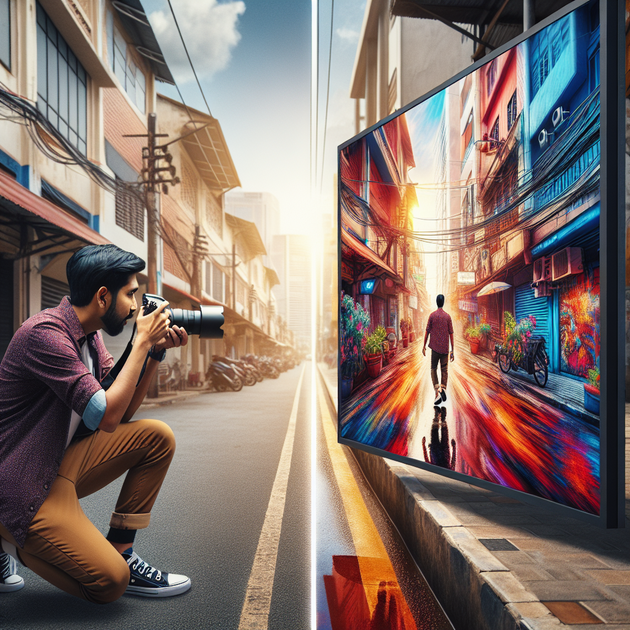Ever wondered how a simple street corner turns into a jaw-dropping photo? That’s the magic of photographer POV—the unique perspective each artist brings to a scene. Let’s peel back the curtain on what happens between what the photographer sees and what you see in their gallery.
What Is Photographer POV?
Photographer POV (point of view) simply means where and how the photographer experiences a scene before snapping the shot. It’s not just about standing behind a camera—it’s about choosing angles, noticing light, and framing the ordinary in extraordinary ways.
You might walk past an alley or busy street and barely notice it. But in a photographer’s hands, that same view becomes almost cinematic. By shifting their perspective, crouching low or finding a unique angle, they transform everyday life into striking images.
If you’re curious about how professional photographers approach this, National Geographic’s photography tips break down how small changes in viewpoint can lead to big differences in photos.
The Journey From POV to Final Photo
It’s one thing to see what’s in front of you; it’s another to turn it into a memorable photograph. Here’s what usually happens between a photographer’s initial glance and the finished image:
- Frame Selection: Finding the right spot and angle.
- Lighting Decisions: Using natural or artificial light for mood.
- Lens Choice: Wide-angle for dramatic effect, or zoom for detail.
- Composing the Shot: Balancing elements in the frame.
- Post-Processing: Editing colors, contrast, and cropping for impact.
The real magic is how these steps turn an average scene into something worth sharing. For some inspiration on how famous photographers approach their craft, check out this New York Times feature on top photography moments.
Before and After: Seeing Both Sides
One of the most fascinating trends online is when photographers share side-by-side shots of their POV versus the final photo. The first image is often just an unremarkable space—maybe even cluttered or dull. The next shows the end result: vibrant color, striking lines, and a story that pulls you in.
This “before and after” approach makes us appreciate not just technical skills but also creativity and vision. Sites like Digital Photo Mentor showcase real examples of how editing and composition can reveal hidden potential in any scene.
What Makes a Photographer’s Perspective Unique?
Every photographer approaches their subject differently—sometimes it’s about emotion, sometimes about technical mastery. Here are a few things that set great photos apart:
- Curiosity: Looking for details others miss.
- Patience: Waiting for just the right moment or light.
- Storytelling: Using visual elements to tell a story.
- Experimentation: Trying new angles or techniques.
Back in college, a friend and I spent an afternoon photographing an old urban bridge. Standing side by side, we saw completely different things—he focused on rusty bolts and shadows; I noticed reflections in puddles beneath our feet. When we compared our photos later, it was clear that our personal perspectives shaped every choice we made, from framing to subject focus. That experience taught me how much creativity is baked right into every shot.
Want to Try It Yourself?
If you’re curious about practicing your own perspective photography, start simple:
- Pick an everyday object or place.
- Shoot it from several angles—high, low, close-up, far away.
- Experiment with different lighting if possible.
- Edit your photos using free tools like GIMP or mobile apps.
- Compare your first shot to your final edit. What changed?
You’ll be surprised at how much your choices matter!
The Takeaway
The next time you scroll past an amazing photo online, remember there was probably an ordinary moment—and a unique point of view—behind it. The difference between “just another snapshot” and “wow!” usually comes down to how the photographer sees the world through their lens.
What ordinary scene would you love to see transformed by a creative eye? Share your thoughts below!

Leave a Reply